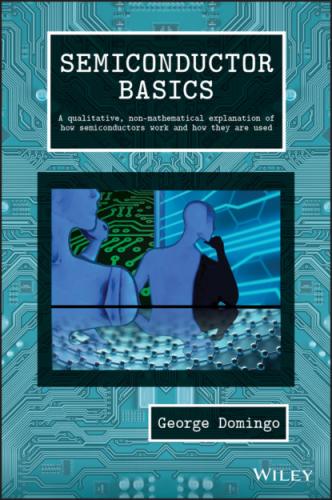Table of Contents
1 Cover
4 1 The Bohr Atom 1.1 Sinusoidal Waves 1.2 The Case of the Missing Lines 1.3 The Strange Behavior of Spectra from Gases and Metals 1.4 The Classifications of Basic Elements 1.5 The Hydrogen Spectrum Lines 1.6 Light is a Particle 1.7 The Atom's Structure 1.8 The Bohr Atom 1.9 Summary and Conclusions Appendix 1.1 Some Details of the Bohr Model Appendix 1.2 Semiconductor Materials Appendix 1.3 Calculating the Rydberg Constant
5 2 Energy Bands 2.1 Bringing Atoms Together 2.2 The Insulator 2.3 The Conductor 2.4 The Semiconductor 2.5 Digression: Water Analogy 2.6 The Mobility of Charges 2.7 Summary and Conclusions Appendix 2.1 Energy Gap in Semiconductors Appendix 2.2 Number of Electrons and the Fermi Function
6 3 Types of Semiconductors 3.1 Semiconductor Materials 3.2 Short Summary of Semiconductor Materials 3.3 Intrinsic Semiconductors 3.4 Doped Semiconductors: n‐Type 3.5 Doped Semiconductors: p‐Type 3.6 Additional Considerations 3.7 Summary and Conclusions Appendix 3.1 The Fermi Levels in Doped Semiconductors Appendix 3.2 Why All Donor Electrons go to the Conduction Band
7 4 Infrared Detectors 4.1 What is Infrared Radiation? 4.2 What Our Eyes Can See 4.3 Infrared Applications 4.4 Types of Infrared Radiation 4.5 Extrinsic Silicon Infrared Detectors 4.6 Intrinsic Infrared Detectors 4.7 Summary and Conclusions Appendix 4.1 Light Diffraction Appendix 4.2 Blackbody Radiation
8 5 The pn‐Junction 5.1 The pn‐Junction 5.2 The Semiconductor Diode 5.3 The Schottky Diode 5.4 The Zener or Tunnel Diode 5.5 Summary and Conclusions Appendix 5.1 Fermi Levels of a pn‐Junction Appendix 5.2 Diffusion and Drift Currents Appendix 5.3 The Thickness of the Transition Region Appendix 5.4 Work Function and the Schottky Diode
9 6 Other Electrical Components 6.1 Voltage and Current 6.2 Resistance 6.3 The Capacitor 6.4 The Inductor 6.5 Sinusoidal Voltage 6.6 Inductor Applications 6.7 Summary and Conclusions Appendix 6.1 Impedance and Phase Changes
10 7 Diode Applications 7.1 Solar Cells 7.2 Rectifiers 7.3 Current Protection Circuit 7.4 Clamping Circuit 7.5 Voltage Clipper 7.6 Half‐wave Voltage Doubler
